 |
THE GOBI, PART 1: FLAMING CLIFFS |
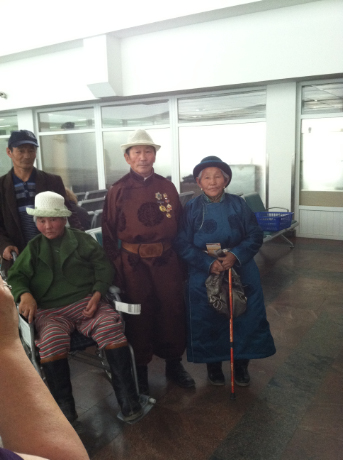 |
 |
|
| We went to the Chinggis Khan airport in Ulaanbaatar to catch a flight to the Gobi. Our fellow passengers were an interesting group.
|
Once at the airport we discovered that we would be flying on EZnis Airways. EZnis Airways?! But they got us there safely, on time and with all our luggage. |
|
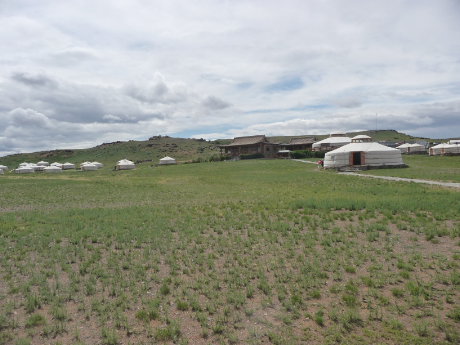 |
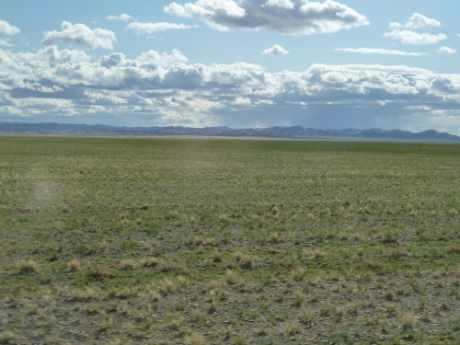 |
|
| Our home for most of our Gobi stay: the Three Camel Lodge Ger Camp. These were exceptionally fancy gers--not only did they have lights, but they had en suite toilets. This is probably the only camp in Mongolia with that luxury. |
Once again, it was hard to fault the view from the room.
|
|
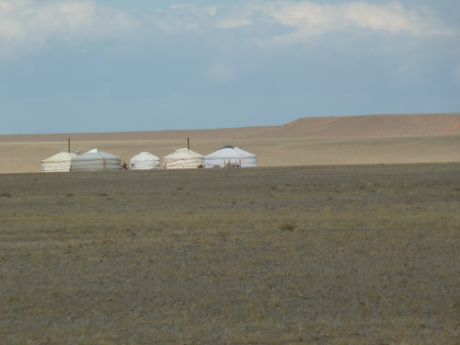 |
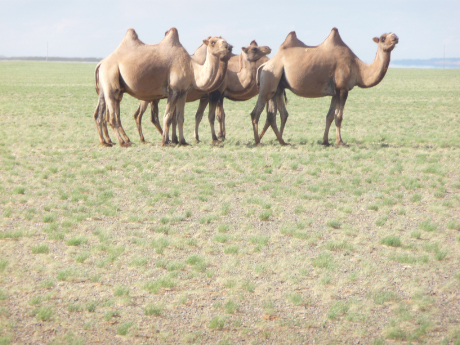 |
|
| A common sight on our travels: a little group of gers on a plain with no one else in sight. Typically all these gers will belong to one extended family.
|
We saw more camels in the Gobi than we had up north. They often seemed to be just wandering around by themselves, although they do belong to someone. | |
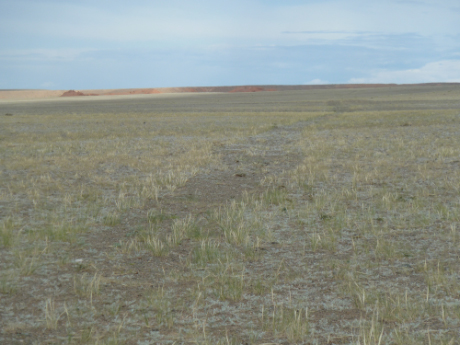 |
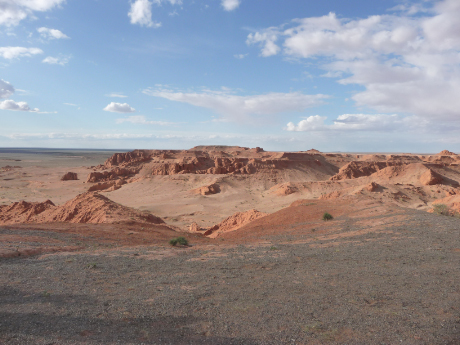 |
|
| This is part of the famous Silk Road ("road" is an elastic concept in Mongolia) that ran from China to Europe. | These are the Flaming Cliffs, an important site for dinosaur fossils. In the 1920's Roy Chapman Andrews led an expedition here that discovered the first dinosaur eggs, as well as many other important fossils.
|
|
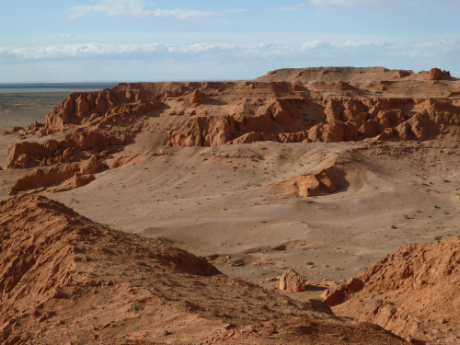 |
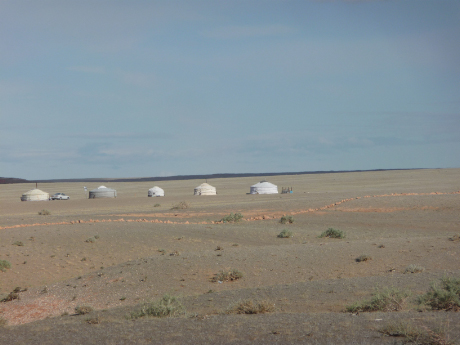 |
|
| The cliffs are spectacular, especially at sunset. They are also unexpected--a huge mass of red sandstone rising out of the surrounding desert.
|
Aside from the cliffs the area is quite barren, lacking even the scrubby grasses found in much of the Gobi. This family was staying here but they didn't seem to have any livestock. | |
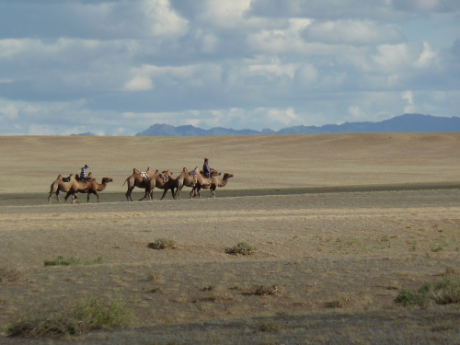 |
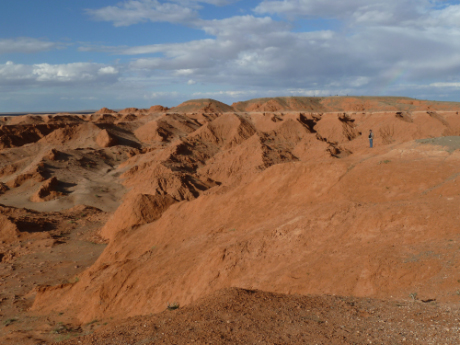 |
|
| Camels are a major mode of transportation for the local people and also often carry gers, although trucks are sometimes used nowadays.
|
Somewhere buried in these cliffs are yet more dinosaur bones. Some of us, especially the guys, were eager to look for them. | |
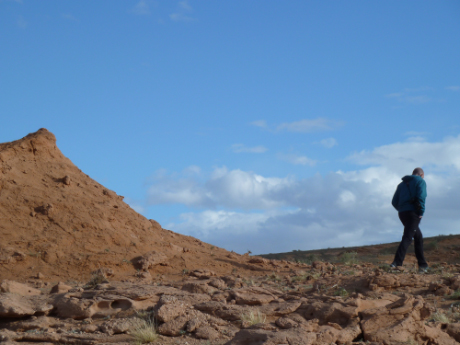 |
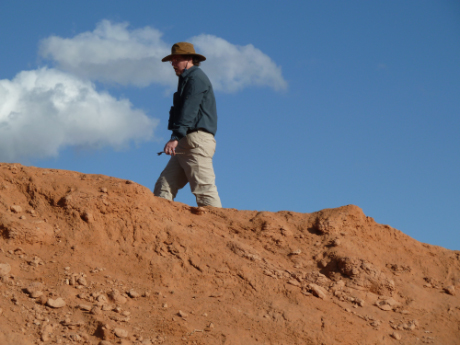 |
|
| The amateur paleontologists at work at the Flaming Cliffs--the bone fragments are so numerous that you don't need tools to find them. Bones can best be distinguished from white rocks by putting them on your tongue--the bones will stick. So we had a bunch of people walking around licking rocks.
|
||
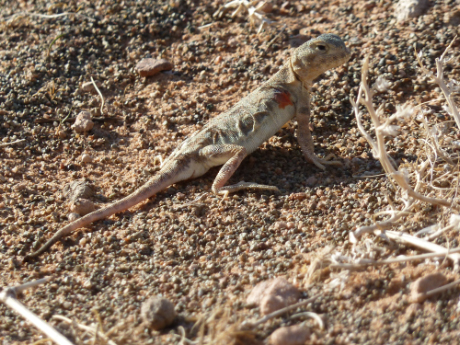 |
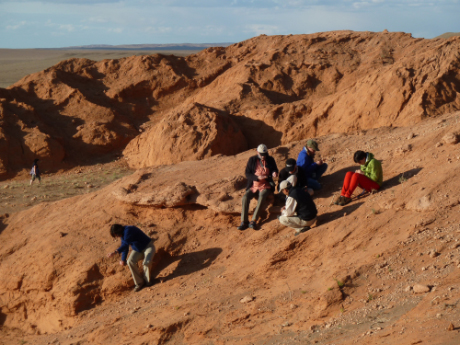 |
|
| This little lizard was also scurrying about, but I doubt that he was looking for dinosaur bones.
|
The 2011 Nat Geo Expedition in the field. | |
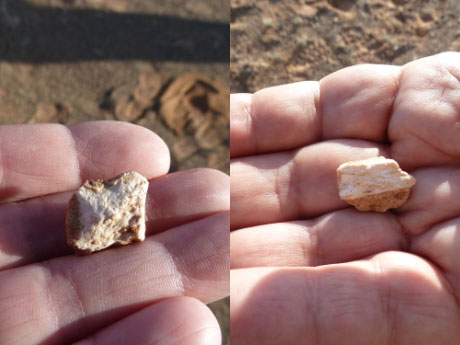 |
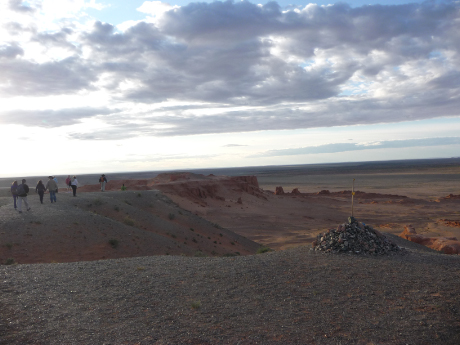 |
|
| Chuck and I each found a few small fragments of bone. Of course, it is illegal to take them out of the country, so we left them there.
|
Then we were invited to walk across the cliffs to dinner. "Is it steep?" we asked Jeremy. "No, I wouldn't say it is steep," he said. Still, Chuck decided to go around by truck; I decided to hike. | |
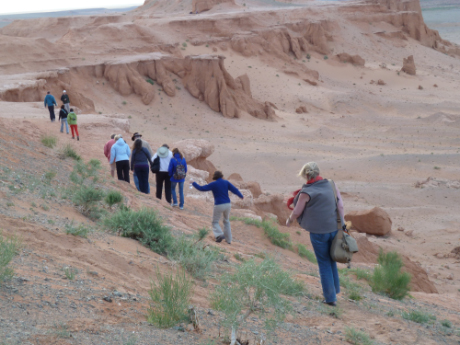 |
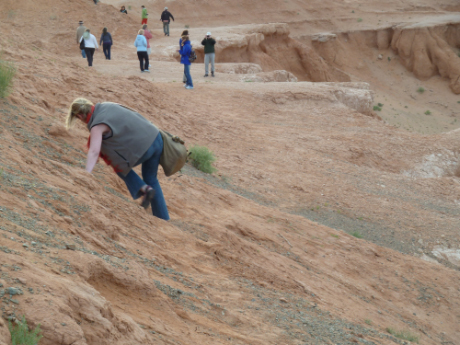 |
|
| OK, technically it wasn't steep for us, because we were walking across the vertical face of the cliff. Kind of a cross between a trail and a climbing wall. It was an adventure.
|
||
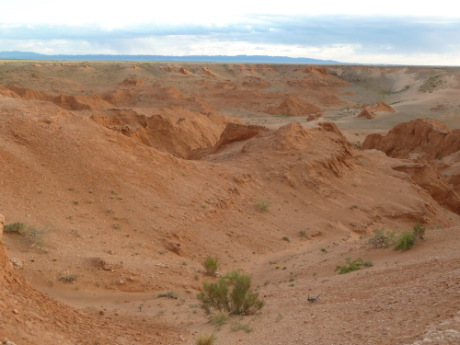 |
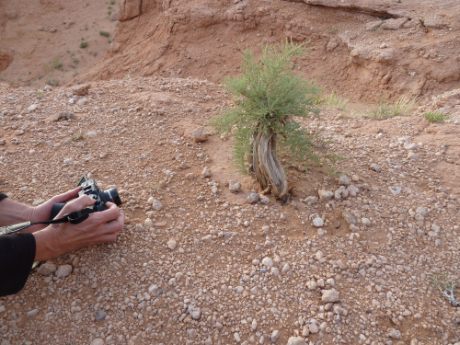 |
|
| On the flatter parts we got some great views of the cliffs and the valley beyond. | This tree might be scores or even hundreds of years old--as in the Arctic, vegetation grows very low in this climate.
|
|
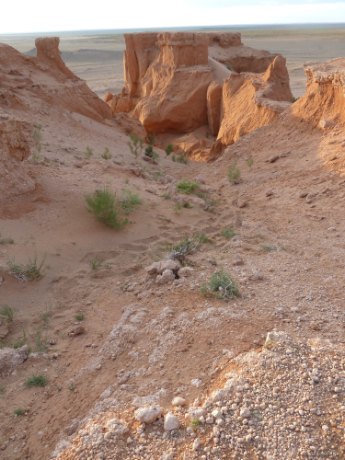 |
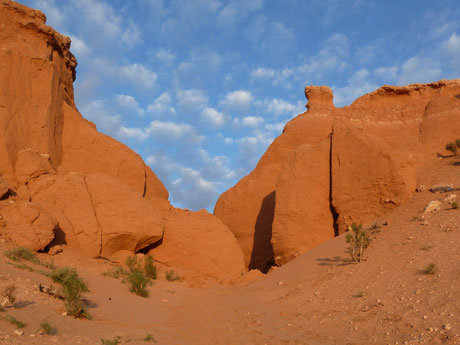 |
|
| The final part of the trail was down a steep canyon which looked formidable but in fact was full of soft sand, making it an easy slide.
|
Looking up at the Flaming Cliffs from the desert floor at sunset. | |
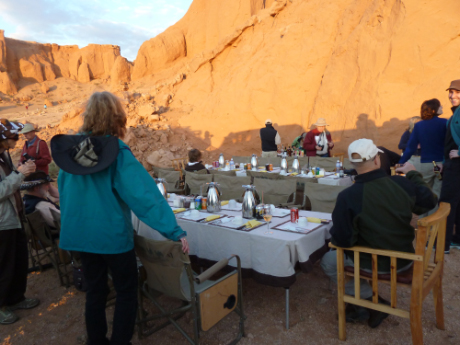 |
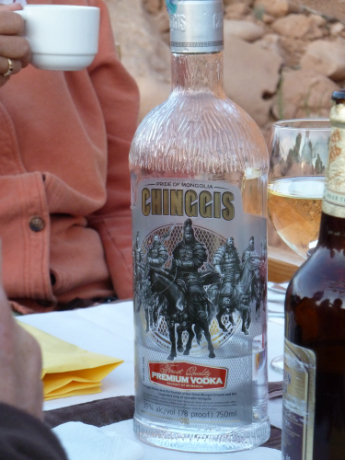 |
|
| To make the hike worth it, there was a picnic dinner waiting for us at the end of the sand slide.
|
Drinks flowed freely, including Chinggis-on-Horseback vodka--one of several Chinggis vodkas widely consumed in the country. (No one ever points out that vodka is actually a Russian drink. . .)
|
|
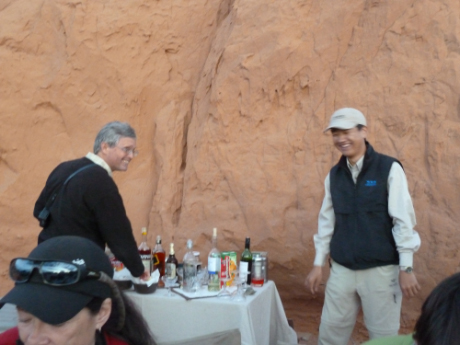 |
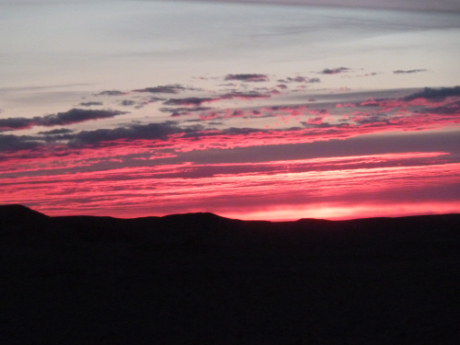 |
|
Your bartenders: Jeremy and Ider.
|
Sunset at Flaming Cliffs. | |

|

|
